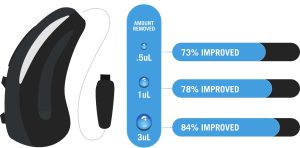
Expertly Refurbished, Scientifically Sterilized, Ready for You. UV-C Light for Hearing Aid Sterilization: Scientific Evidence, Protocols, and Best Practices At Hears Hearing & Hearables, we understand that choosing a used ...
What Happened to Our Oticon Account? It’s with a heavy heart that we announce the closing of our Oticon account. Oticon, a well-known hearing aid manufacturer, has a strict policy ...

Keeping Hearing Aids Dry with the Redux System: A Game Changer for Hearing Aid Users Hearing aids are essential devices for millions of people worldwide, providing a significant improvement in ...

Hearing Aid Fitting: The Best of Appointments for Audiologists and Patients Alike In the realm of audiology, there’s a special and immensely rewarding aspect that often goes unnoticed, the art ...

Why do some Americans not want to pay for Service? For many years now I have been aware that many people do not want to pay for service. People will ...

We will Help Venues Find A Solution for their Patrons Make Sure your Community has Accessibility, Accommodation Offering an Assisted Listening Device to Help Those who Can’t Hear Well. We ...
Powered By SinglerDesign.com